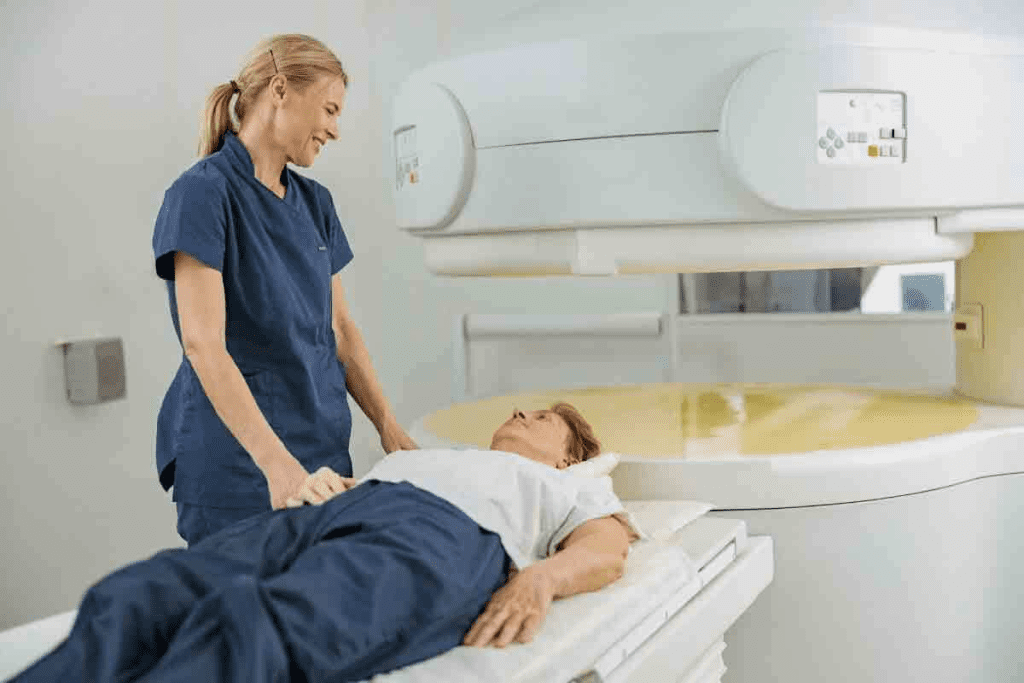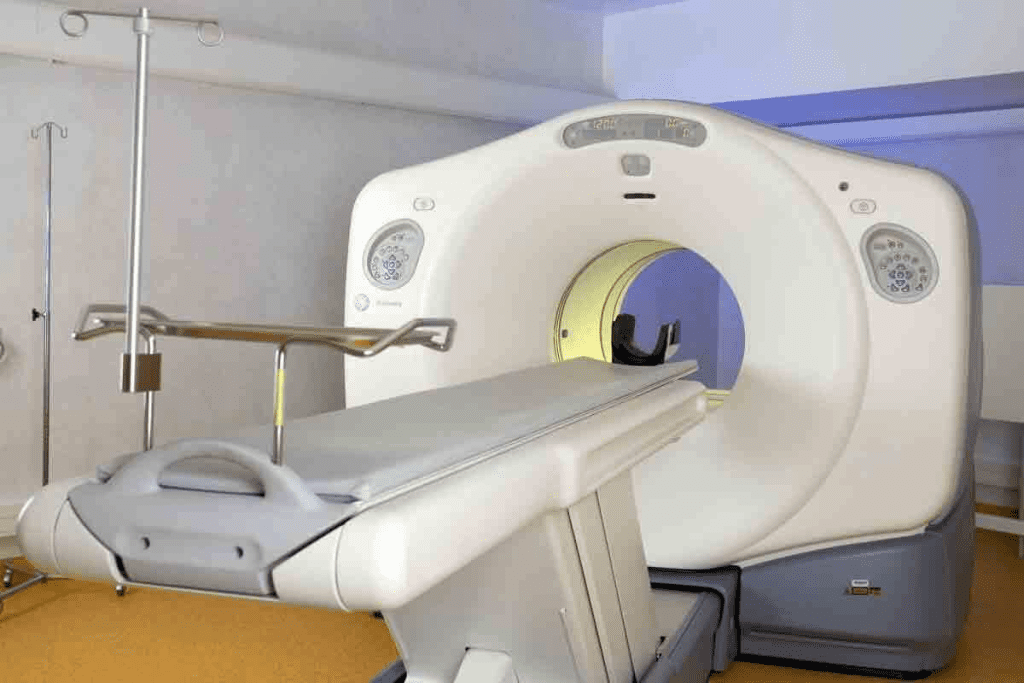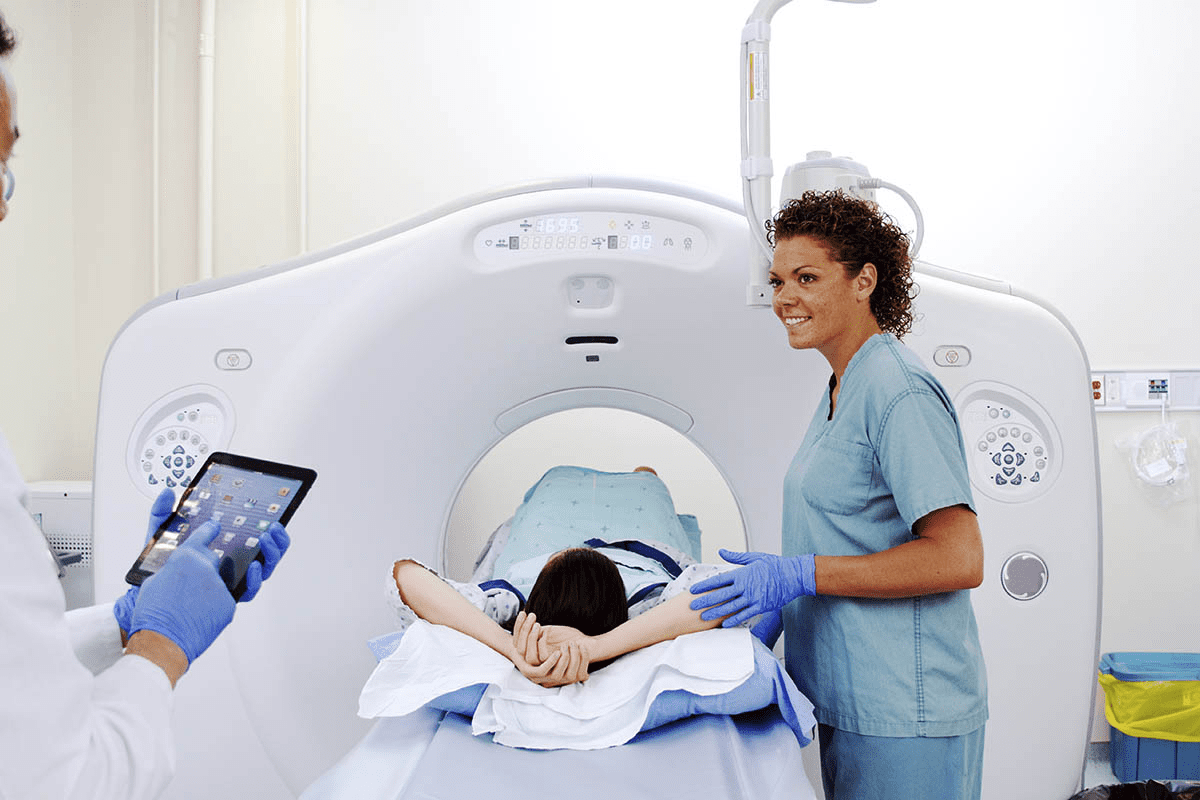Last Updated on November 27, 2025 by Bilal Hasdemir

When facing bone metastases, getting an accurate diagnosis is key. At Liv Hospital, we know how important it is to pick the right tool. Recent studies show PET CT is better than traditional bone scans for finding metastatic lesions.
PET/CT is better at spotting bone metastases than bone scans, studies say. This is true for some cancers. We’ll look at the main differences between these tests. We’ll see why PET CT is more sensitive and accurate.
Key Takeaways
- PET CT offers higher sensitivity and accuracy for detecting bone metastases.
- Bone scans are more traditional but less accurate in certain cancer types.
- PET/CT is very effective for certain cancer types.
- Diagnostic performance varies between PET CT and bone scans.
- Understanding the differences is key for patient care.
Understanding Bone Metastases and Diagnostic Imaging

Understanding bone metastases and how to diagnose them is key to better patient care in oncology. Bone metastases happen when cancer cells move to the bones. This can cause a lot of pain and other problems.
What Are Bone Metastases?
Bone metastases are cancer cells that spread to the bones from another tumor. They can cause pain, fractures, and high calcium levels in the blood.
Importance of Early and Accurate Detection
Finding bone metastases early is very important. Accurate diagnosis helps doctors plan the best treatment. This can make patients feel better and live longer.
Advanced imaging like bone scans and PET CT are very helpful. They help doctors find bone metastases quickly.
Overview of Common Imaging Modalities
There are many ways to find bone metastases, each with its own benefits and drawbacks. Bone scans are good at finding cancer in bones. PET CT gives detailed information about the cancer’s activity and location.
We will look at these methods more closely. We will see how well they work in finding bone metastases.
How Bone Scans Work: Technology and Procedure

To understand bone scans, we need to know the technology behind them. Bone scans, or bone scintigraphy, show how bones work. They help doctors see bone activity.
The Science Behind Bone Scintigraphy
Bone scintigraphy uses a tiny bit of radioactive material. This material, often a technetium-99m labeled diphosphonate compound, is injected into the blood. It goes to areas where bones are very active, like in tumors or infections.
The material sends out gamma radiation. A gamma camera picks up this radiation. It moves around the patient, taking pictures from different angles. These pictures are then put together to show the whole skeleton, pointing out any unusual activity.
Patient Experience During a Bone Scan
The bone scan process is easy and doesn’t hurt. Patients usually arrive 30 minutes to an hour early. This lets the tracer spread through their body.
When it’s time for the scan, the patient lies down. The gamma camera goes around them. The whole scan takes about 30-60 minutes. It’s important for patients to stay very quiet to get clear pictures.
Radiation Exposure Considerations
One worry about bone scans is the radiation. The dose is low, similar to a CT scan of the abdomen. But, it’s important to think about the benefits against the risks of radiation.
We are very careful about radiation safety. We use the least amount of radioactive material needed. This helps keep patients and staff safe.
How PET CT Works: Technology and Procedure
PET CT combines PET and CT technologies to detect bone metastases. It uses PET for functional info and CT for anatomy. This gives a full view of the disease.
The Science Behind PET CT Imaging
PET CT uses a radioactive tracer, Fluorodeoxyglucose (FDG), to find cancer cells. The PET part spots the tracer, and CT scans show the body’s structure. Together, they improve finding bone metastases.
First, the FDG tracer is injected. Then, the body absorbs it. Next, the PET CT scan takes about 30 minutes to an hour.
- The PET part captures metabolic activity.
- The CT scan gives detailed anatomy.
- The combined images show both function and structure of the disease.
Patient Experience During a PET CT Scan
Patients lie on a table that moves into the scanner. The scan is usually okay, but some might feel claustrophobic or uncomfortable.
To get better images, patients are asked to:
- Not eat for a few hours before.
- Avoid hard activities that could affect the scan.
- Stay very quiet during the scan.
Radiation Exposure Considerations
PET CT scans involve some radiation. But, the doses are set to be low while keeping the scan useful.
We do several things to lower radiation:
- Use the least amount of tracer needed.
- Adjust CT settings to use less radiation but keep images clear.
- Use new algorithms to make images better.
PET CT is more accurate than old bone scans. It’s great for finding and managing bone metastases. Knowing about PET CT helps patients prepare for this advanced test.
Bone Scan vs PET CT: Sensitivity and Detection Rates
Understanding how bone scans and PET CT work is key to spotting bone metastases. We’ll look at their sensitivity and detection rates. This is important for different types of cancer.
Comparative Sensitivity Rates
PET/CT is better than bone scans at finding bone metastases. PET/CT’s advanced technology helps spot metastatic disease better, in some cancers.
A study showed PET/CT is way more sensitive than bone scans. Here’s a table with the results:
| Imaging Modality | Sensitivity Rate (%) | Accuracy Rate (%) |
| Bone Scan | 75 | 80 |
| PET/CT | 90 | 95 |
Detection Capabilities by Cancer Type
The ability to detect bone metastases varies by cancer type. For example, PET/CT is better at finding bone metastases in lung and breast cancer.
Recent studies show PET/CT is more accurate than bone scans for some cancers. Here’s an image showing the difference:
Knowing these differences helps doctors choose the best imaging for each patient.
Difference #2: Specificity and False Positive Rates
It’s important to know how bone scans and PET CT scans differ in specificity and false positive rates. This knowledge helps in making accurate diagnoses and planning treatments. Specificity means a test can correctly say who doesn’t have a disease, avoiding false positives.
Understanding Specificity in Diagnostic Imaging
Specificity is key when checking how well a test works. A test with high specificity will mostly say patients without bone metastases are negative. This means less worry and fewer tests for them.
High specificity is very important for finding bone metastases. It helps doctors make better decisions and avoid treating too much.
False Positive Rates Comparison
False positives can cause worry, extra tests, and higher costs. Looking at the false positive rates of bone scans and PET CT scans helps us see how they compare.
Here’s a table with data from studies on false positive rates:
| Imaging Modality | False Positive Rate (%) | Study Sample Size |
| Bone Scan | 15-20% | 500 patients |
| PET CT | 5-10% | 500 patients |
The table shows PET CT scans have a lower false positive rate than bone scans. This means PET CT is more specific in finding bone metastases.
Impact on Patient Diagnosis and Treatment Planning
The specificity and false positive rates of tests affect how we diagnose and treat patients. A test like PET CT, with high specificity and low false positives, gives more accurate results. This leads to better treatment plans.
A false positive from a bone scan might mean extra tests or treatments. But a true negative from a PET CT scan can reassure patients and avoid unnecessary steps. So, knowing these details is key for doctors choosing between bone scans and PET CT scans.
In summary, when comparing bone scans and PET CT scans, their specificity and false positive rates are very important. These factors help in diagnosing and planning treatments. By picking the right test, doctors can improve patient care.
Difference #3: Detection of Osteolytic vs Osteoblastic Lesions
Bone metastases can be osteolytic, osteoblastic, or mixed. Each type has its own challenges for imaging. Knowing these differences helps pick the best imaging method.
Osteolytic Lesions: PET CT Advantages
Osteolytic lesions destroy bone, often due to cancer. PET CT excels in finding these lesions. It does this by showing where cells are most active.
PET CT’s strength in finding osteolytic lesions comes from its mix of function and anatomy. This lets it spot lesions that regular images miss.
Osteoblastic Lesions: Bone Scan Strengths
Osteoblastic lesions, on the other hand, involve abnormal bone growth. Bone scans are great at catching this because they track bone activity. This makes bone scans top-notch for finding osteoblastic lesions.
| Lesion Type | PET CT Sensitivity | Bone Scan Sensitivity |
| Osteolytic | High | Low-Moderate |
| Osteoblastic | Moderate | High |
| Mixed | High | Moderate-High |
Mixed Lesions: Comparative Performance
Mixed lesions have both osteolytic and osteoblastic parts. PET CT is good at finding the osteolytic parts. Bone scans are better at spotting the osteoblastic parts.
The choice between PET CT and bone scans for mixed lesions depends on the mix of osteolytic and osteoblastic parts. PET CT usually does well, but only if the osteolytic part is big.
In summary, the right choice between PET CT and bone scan depends on the type of lesion. PET CT is best for osteolytic lesions, while bone scans are better for osteoblastic ones. For mixed lesions, it depends on their mix.
Difference #4: Anatomical Considerations and Regional Accuracy
It’s key to know how different imaging methods work in different body parts. This helps spot bone metastases accurately. The body’s layout affects how well bone scans and PET CT work.
Spine and Extremity Metastases Detection
The spine is a common spot for bone metastases. Both bone scans and PET CT are used here. PET CT is better at finding spine metastases, mainly for osteolytic lesions. Bone scans, though, are good at finding osteoblastic lesions, common in some cancers.
Cranial Metastases Evaluation
Cranial metastases are tricky because of the skull and brain’s complex layout. PET CT shines here by giving detailed metabolic info. It helps tell apart metastases from other brain issues. Bone scans, though, struggle here because of normal bone’s high tracer uptake.
Other Anatomical Regions: Comparative Performance
In places like the pelvis and ribs, both methods have their perks. Bone scans are good at finding metastases here, mainly for osteoblastic lesions. Yet, PET CT offers a broader view, spotting more disease and extra lesions not seen on bone scans.
In summary, picking between bone scans and PET CT depends on the body part. Knowing each method’s strengths and weaknesses helps doctors make better choices. This leads to better care for patients.
Difference #5: Cost, Availability, and Practical Considerations
Choosing between bone scan and PET CT for bone metastases involves more than just how well they work. Cost and how easy they are to get also play big roles. These factors can really shape our choice of imaging method.
Cost Comparison Between Modalities
The price of bone scans and PET CT scans can change a lot. This depends on where you are, the tech used, and who does the scan. Bone scans are usually cheaper than PET CT scans.
PET CT scans give a more detailed look, which might be worth the extra cost in some cases. A study showed bone scans cost about $300-$500. PET CT scans can cost between $1,000 to $3,000 or more. This depends on the scan’s complexity and where you get it done.
It’s not just the first cost that matters. Think about the costs of more tests, follow-ups, and managing wrong results. In some cases, PET CT’s better accuracy might save money by avoiding more tests.
Availability and Accessibility
Where you can get bone scans and PET CT scans can vary a lot. PET CT scanners are mostly in big hospitals or special centers. This can make them hard to get in rural or less served areas. Bone scans are more common, even in smaller hospitals.
Insurance Coverage Considerations
Insurance for bone scans and PET CT scans can be different. It depends on your plan and why you need the scan. Always check your insurance before getting a scan to avoid surprise costs. Some plans need approval for PET CT scans because they’re more expensive.
In short, picking between bone scans and PET CT for bone metastases is not just about how well they work. Cost, where you can get them, and insurance are also key. Knowing these can help make better choices that meet both medical needs and practical realities.
Difference #6: Clinical Applications and Protocol Integration
The success of bone scans and PET CT in clinics depends on how well they fit into routine care plans. It’s key to understand how these tools are used in different medical situations.
Routine Staging Protocols
Staging cancer is vital for planning treatment. Bone scans are often used because they check the whole skeleton. But PET CT is gaining favor for its detailed look at both the body’s metabolism and structure.
Here’s a table comparing bone scans and PET CT in staging:
| Characteristics | Bone Scan | PET CT |
| Sensitivity for Bone Metastases | High | High |
| Specificity for Bone Metastases | Low to Moderate | High |
| Anatomical Detail | Limited | High |
Treatment Response Monitoring
Keeping track of how well treatment is working is essential. PET CT stands out here because it can spot changes in tumor activity. It’s becoming the go-to for tracking treatment success, mainly in cancers with high metabolic activity.
PET CT’s early detection of metabolic changes in tumors means doctors can adjust treatment plans quickly.
Complementary Use of Imaging Modalities
Often, using bone scans and PET CT together gives a clearer picture of the disease and how it’s responding to treatment. For example, a bone scan might be first used for staging, while PET CT is for tracking treatment progress.
By combining these imaging methods, we can better care for patients with bone metastases. As we progress, the use of both bone scans and PET CT will remain critical in managing these patients.
Difference #7: Future Developments and Emerging Technologies
Medical imaging is getting better, thanks to new technologies in PET CT and bone scans. These advancements will change how we diagnose and treat cancer. New technologies will make these imaging tools even better.
Advancements in PET CT Technology
PET CT tech is getting better, with new scanners and software. Next-generation PET CT scanners can spot small tumors better. Artificial intelligence and radiomics are also improving how we read these images.
New tracers are being developed for PET CT. These tracers can show more about tumor biology. They can tell us how aggressive a tumor is and how it might react to treatment.
Innovations in Bone Scan Techniques
Bone scans are getting a boost too. New SPECT/CT systems mix SPECT’s function with CT’s detail. This makes bone scans more accurate. New image reconstruction algorithms also improve image quality and cut down on radiation.
New bone-seeking radiopharmaceuticals are being researched. These aim to make bone scans more sensitive and specific. This could help find bone metastases better and track treatment progress.
Hybrid and Novel Imaging Approaches
The future of finding bone metastases is in new imaging methods. Hybrid PET/MR systems can look at bones and soft tissues together. Other new methods include contrast-enhanced imaging and functional MRI to learn more about tumors and how they respond to treatment.
As these new technologies grow, we’ll see big improvements in treating bone metastases. Artificial intelligence and machine learning will make these images even more accurate. This will help tailor treatments to each patient.
Conclusion: Making the Right Choice for Bone Metastases Detection
Choosing the right imaging modality for bone metastases detection is key for good patient care. We’ve looked at the main differences between bone scans and PET CT. We’ve also talked about their strengths and weaknesses.
The choice between these options depends on several factors. These include the type of cancer, the area of the body affected, and practical considerations. For example, PET CT is better for finding osteolytic lesions. On the other hand, bone scans are great for spotting osteoblastic lesions.
Healthcare providers can make better choices by knowing what each modality does well. This personalized approach helps in making accurate diagnoses and planning effective treatments. It leads to better outcomes for patients.
As medical imaging technology gets better, we’ll be able to detect and manage bone metastases even more effectively. When deciding between PET CT and bone scans, it’s important to consider the patient’s specific needs and situation.
FAQ
What is the difference between a bone scan and a PET CT scan?
A bone scan uses a small amount of radioactive material to see how bones work. A PET CT scan combines PET’s functional info with CT’s body details. This gives a clearer view of bone metastases.
Which is more sensitive for detecting bone metastases, bone scan or PET CT?
PET CT is more sensitive than bone scan for finding bone metastases, mainly in certain cancers.
What are the advantages of PET CT over bone scan in detecting osteolytic lesions?
PET CT is better at spotting osteolytic lesions. It can see tumor cells and their activity directly.
How do bone scans and PET CT compare in terms of specificity and false positive rates?
PET CT has a lower false positive rate than bone scan. It gives more precise info about lesions.
What are the practical considerations when choosing between bone scan and PET CT?
When choosing, consider cost, availability, and insurance. PET CT is pricier and less common than bone scan.
Can bone scan and PET CT be used together in clinical practice?
Yes, they can be used together. Bone scan gives a broad view of bone health. PET CT offers detailed info on specific lesions.
How do advancements in PET CT technology impact bone metastases detection?
New PET CT tech, like better scanners and tracers, helps spot and detail bone metastases better.
What are the emerging technologies in bone scan and PET CT?
New tech includes hybrid imaging and novel tracers. These aim to better detect and understand bone metastases.
Does a PET scan show bone cancer?
Yes, a PET scan can show bone cancer, when used with CT or other scans.
What is the role of PET CT in monitoring treatment response in bone metastases?
PET CT is key in tracking treatment success in bone metastases. It checks for changes in tumor activity and structure.
How does PET CT compare to bone scan in detecting bone metastases in different anatomical regions?
PET CT is more accurate than bone scan in some areas, like the spine and limbs.
What are the radiation exposure considerations for bone scan and PET CT?
Both scans involve radiation, but the doses are safe for diagnosis.
References
- Akashi, T., Osada, S., Shigematsu, H., et al. (2021). Diagnostic value of 18F-FDG PET/CT compared to bone scintigraphy, CT, and PET alone in detection of bone metastases. Journal of Nuclear Medicine. https://pubmed.ncbi.nlm.nih.gov/23886160/
- Alomari, A. I., & Abdelsalam, S. (2023). Comparison of PET/CT and MRI in the diagnosis of bone metastasis: A review. Frontiers in Oncology.https://www.frontiersin.org/journals/oncology/articles/10.3389/fonc.2021.736654/full






